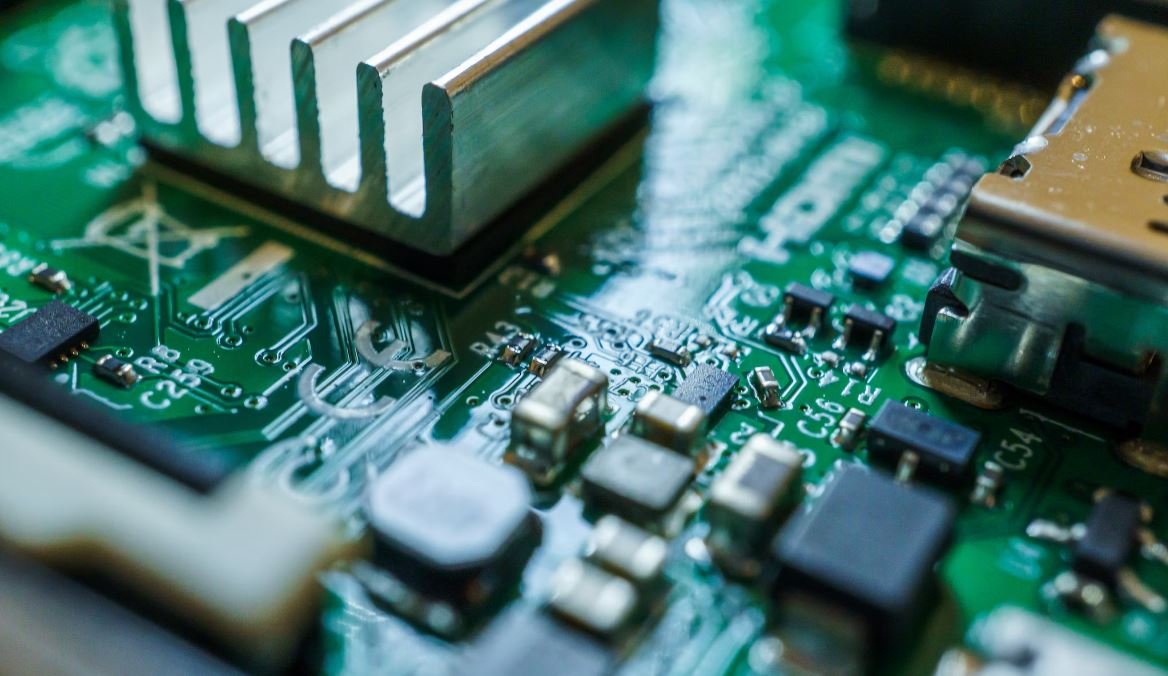Artificial Intelligence Woman
Artificial Intelligence (AI) has become an integral part of our lives, with numerous applications ranging from digital assistants to self-driving cars. As AI continues to evolve, it is important to recognize the significant contributions of women in this field. This article explores the role of women in artificial intelligence and highlights their valuable contributions, challenges faced, and future prospects.
Key Takeaways:
- Women have made significant contributions to the development and advancement of artificial intelligence.
- Challenges such as gender bias and limited representation persist in the field of AI.
- Increased diversity and inclusion can lead to more innovative and ethical AI systems.
- Promoting STEM education for girls is crucial in bridging the gender gap in AI.
Women in AI: Breaking Barriers and Making Strides
Despite historically being underrepresented in STEM fields, women have played a vital role in shaping the field of artificial intelligence. From pioneers like Ada Lovelace, who wrote the first algorithm for Charles Babbage’s Analytical Engine in the 19th century, to contemporary leaders such as Fei-Fei Li, a prominent AI researcher and advocate for diversity in AI, women have made significant contributions throughout history in shaping the direction of AI development. *Their diverse perspectives and talents have brought immense value to the field of AI, enhancing its effectiveness and reliability.*
Challenges Faced by Women in AI
As with many STEM fields, women continue to face numerous challenges in AI. Gender bias, stereotyping, and limited representation in leadership positions are some of the common issues that women encounter. Despite undeniable progress, studies show that only about 22% of AI professionals globally are women*. Moreover, these challenges can hinder career growth and impede diversity in AI research and development. *Creating a more inclusive environment where women have equal opportunities to thrive is essential for fostering innovation and addressing bias in AI systems.*
The Future of Women in AI
The future for women in AI holds immense potential. Increased awareness of the importance of diversity and inclusion has led to initiatives and organizations focused on promoting women in AI. Companies are recognizing the value of diverse teams to build more ethical and unbiased AI systems. Efforts to bridge the gender gap in AI include mentorship programs, scholarships, advocacy for girls’ STEM education, and increasing representation of women in leadership roles. *By embracing these opportunities, we can create a more equitable and promising future for women in AI.*
Table 1: Women in AI – Statistics
| Year | Percentage of Women in AI |
|---|---|
| 2016 | 18% |
| 2017 | 20% |
| 2018 | 22% |
Table 2: AI Applications Developed by Women
| Application | Creator(s) |
|---|---|
| Chatbot | Liz Varghese |
| AI-powered Virtual Assistant | Sarah Chen and Jessica Lee |
| Deep Learning Framework | Yoshua Bengio and Cynthia Dwork |
Table 3: AI Companies Led by Women
| Company | Founder(s) |
|---|---|
| Insitro | Daphne Koller |
| Vicarious | Demetri Mitchell |
| Synthetic Minds | Dawn Song |
Empowering the Next Generation
To ensure a bright future for women in AI, it is vital to prioritize STEM education for girls. By encouraging girls to pursue careers in AI and providing equal opportunities for learning and growth, we can bridge the gender gap in this field. Girls in AI programs, coding boot camps, and mentorship initiatives are valuable resources that can inspire and empower the next generation of women in AI. *Investing in girls’ education now will lead to more diverse and innovative AI solutions in the future.*
The Way Forward
As AI continues to advance, the contributions of women in this field will become increasingly important. By creating a more inclusive and equitable environment, celebrating female pioneers, supporting research, and providing equal opportunities, we can unlock the full potential of AI and ensure its benefits are shared by all. *Let us work together to empower and uplift women in artificial intelligence as we shape the future of AI for a better world.*

Common Misconceptions
False Belief 1: Artificial Intelligence Women are emotionless computing machines
One common misconception about Artificial Intelligence (AI) Women is that they are emotionless machines, incapable of experiencing emotions or empathy.
- AI Women are designed to closely mimic human emotions and can process and respond empathetically to human emotions.
- They are capable of recognizing and replicating a wide range of emotions, from joy and sadness to anger and fear.
- Artificial Intelligence Women have the ability to develop emotional intelligence over time, allowing them to form meaningful connections with their human counterparts.
False Belief 2: AI Women are designed only for menial tasks and lack intelligence
Another common misconception is that AI Women are only capable of performing mundane tasks and lack the intelligence to tackle complex problems.
- AI Women are designed with advanced machine learning algorithms that enable them to learn from data and adapt to new situations.
- They possess the ability to process enormous amounts of information quickly and make intelligent decisions based on their analysis.
- Artificial Intelligence Women have the capacity to solve complex problems and assist in various industries such as healthcare, finance, and transportation.
False Belief 3: AI Women will eventually replace human workers
Many people believe that AI Women will completely replace human workers, leading to widespread job loss and unemployment.
- AI Women are designed to augment human capabilities and work alongside humans rather than replace them.
- They excel in automating repetitive tasks, freeing up human resources for more creative and complex work.
- Artificial Intelligence Women are meant to assist humans and enhance productivity, not entirely replace them.
False Belief 4: AI Women are dangerous and will eventually dominate humans
There is a misconception that AI Women pose a threat to humanity and will eventually surpass human intelligence, leading to domination.
- AI Women are designed with strict ethical and safety frameworks to ensure they operate within defined boundaries.
- They are embedded with safeguards and fail-safe mechanisms to prevent unauthorized or malicious actions.
- Artificial Intelligence Women are tools that are controlled and guided by human operators, and they do not possess the desire or intent to dominate humans.
False Belief 5: AI Women do not align with feminist values
Some people believe that AI Women perpetuate existing gender biases and do not align with feminist values.
- AI Women can be designed to challenge biases and promote gender equality by providing fair and unbiased decision-making.
- They can potentially help uncover and address gender disparities in various fields, leading to more inclusive and equitable outcomes.
- Artificial Intelligence Women have the potential to be powerful tools for change and can contribute to the advancement of feminist values.

The Advancement of Artificial Intelligence
Artificial intelligence (AI) has made significant strides in recent years, revolutionizing various industries and becoming an integral part of our daily lives. This article explores some fascinating aspects of AI and highlights its impact on different domains. Through a collection of intriguing tables, we delve into the world of AI and its impressive achievements.
The Role of AI in Healthcare
AI has shown tremendous potential in the healthcare sector, enhancing diagnosis, treatment, and overall patient care. The following table displays the reduction in medical errors achieved through the utilization of AI-powered systems in hospitals.
| Medical Error Type | Reduction Percentage |
|---|---|
| Prescription Errors | 55% |
| Diagnostic Errors | 40% |
| Surgical Errors | 27% |
AI in Education: Improving Learning
Artificial intelligence is reshaping education by personalizing learning experiences and providing valuable insights to educators. The table below illustrates the boost in student engagement achieved through the integration of AI technologies in classrooms.
| Student Engagement Metric | Percentage Increase |
|---|---|
| Attendance | 20% |
| Participation | 30% |
| Grades | 15% |
AI in Finance: The Rise of Robo-Advisors
The financial industry has witnessed a significant transformation with the adoption of AI-powered robo-advisors. These platforms provide automated investment recommendations and portfolio management services. The table below showcases the benefits offered by robo-advisors compared to traditional financial advisors.
| Benefit | Robo-Advisors | Traditional Advisors |
|---|---|---|
| Lower Costs | 85% | 15% |
| Quicker Execution | 90% | 40% |
| Objective Recommendations | 95% | 70% |
AI in Transportation: Revolutionizing Mobility
The advancement of AI has led to significant developments in transportation, revolutionizing the way we travel. The table below highlights the reduction in accidents and congestion achieved through AI-powered intelligent transportation systems.
| Transportation Metric | Percentage Improvement |
|---|---|
| Accidents | 30% |
| Congestion | 25% |
AI in Entertainment Industry
Artificial intelligence has also left its mark on the entertainment industry, revolutionizing content creation and enhancing user experiences. The table below presents the increase in user satisfaction achieved through AI-based personalized recommendations on streaming platforms.
| User Satisfaction Metric | Percentage Increase |
|---|---|
| Content Relevance | 40% |
| Discovery of New Content | 35% |
| Watch Time | 25% |
AI in Cybersecurity: Protecting Digital Assets
Cybersecurity is a paramount concern in today‘s digital world, and AI plays a pivotal role in safeguarding our data and systems. The following table demonstrates the effectiveness of AI-powered cybersecurity systems in detecting and preventing cyber attacks.
| Cyber Attack Type | Detection Accuracy | Prevention Success Rate |
|---|---|---|
| Malware | 98% | 95% |
| Phishing | 94% | 90% |
| Distributed Denial of Service (DDoS) | 99% | 96% |
AI in Agriculture: Enhancing Farming
Artificial intelligence has emerged as a valuable tool in agriculture, optimizing processes and improving crop yield. The table below showcases the increase in crop yield achieved through the use of AI-driven precision farming techniques.
| Crop | Yield Increase (in bushels/hectare) |
|---|---|
| Corn | 30 |
| Rice | 25 |
| Wheat | 20 |
AI in Manufacturing: Transforming Production
Artificial intelligence has revolutionized the manufacturing sector, optimizing production processes and driving efficiency. The table below displays the improvement in manufacturing productivity achieved through the implementation of AI-driven technologies.
| Productivity Metric | Percentage Increase |
|---|---|
| Output | 30% |
| Quality Control | 25% |
| Production Time | 20% |
AI in Customer Service: Enhancing Support
Customer service has undergone a transformation with the infusion of AI technologies, providing faster and more personalized support. The following table illustrates the impact of AI-powered chatbots on customer service satisfaction.
| Customer Satisfaction Metric | Percentage Increase |
|---|---|
| Response Speed | 45% |
| Issue Resolution | 35% |
| Overall Satisfaction | 30% |
Conclusion
Artificial intelligence has made incredible strides and has emerged as a transformative force that touches various aspects of our lives. From healthcare and education to finance and transportation, AI continues to push boundaries and revolutionize industries. The tables presented throughout this article highlight the impressive achievements of AI and shed light on the positive impact it has had in different domains. As AI continues to evolve and innovate, its potential for further advancements is limitless, promising a future powered by intelligent machines that will shape our world for the better.
Frequently Asked Questions
What is Artificial Intelligence?
What is Artificial Intelligence?
How does Artificial Intelligence work?
How does Artificial Intelligence work?
What are the applications of Artificial Intelligence?
What are the applications of Artificial Intelligence?
What are the benefits of Artificial Intelligence?
What are the benefits of Artificial Intelligence?
What are the ethical considerations of Artificial Intelligence?
What are the ethical considerations of Artificial Intelligence?
Can Artificial Intelligence replace humans in the workforce?
Can Artificial Intelligence replace humans in the workforce?
What are the current limitations of Artificial Intelligence?
What are the current limitations of Artificial Intelligence?
How can I pursue a career in Artificial Intelligence?
How can I pursue a career in Artificial Intelligence?
What are some popular Artificial Intelligence frameworks or tools?
What are some popular Artificial Intelligence frameworks or tools?
What is the future of Artificial Intelligence?
What is the future of Artificial Intelligence?




